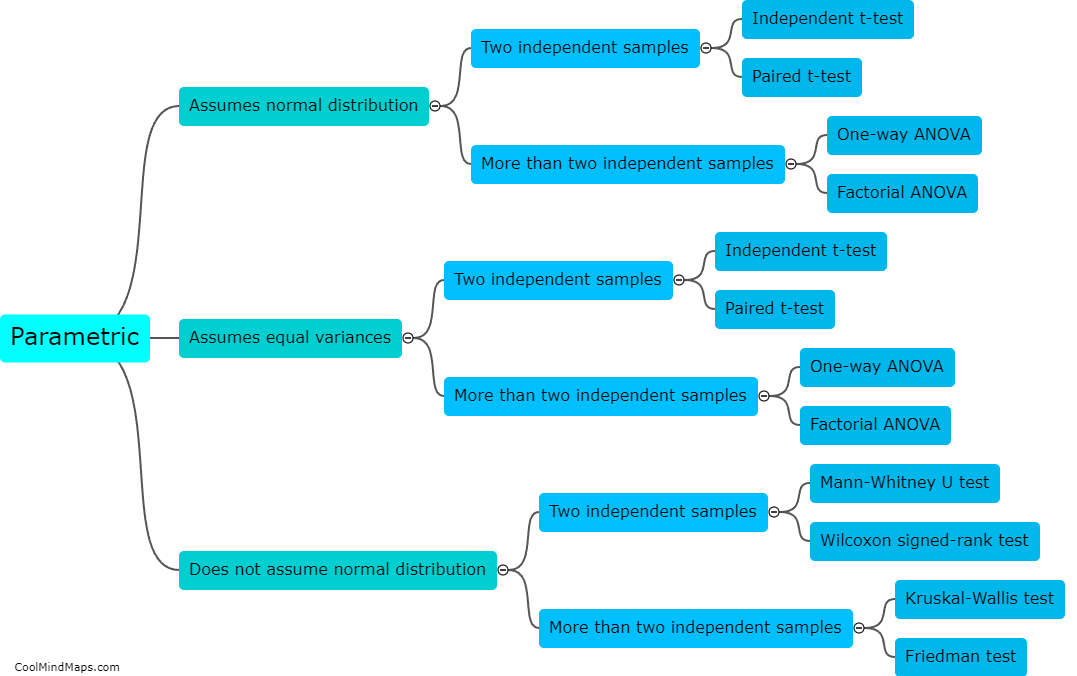How do parametric and non-parametric tests differ in terms of assumptions?
Parametric and non-parametric tests differ in terms of assumptions primarily due to the nature of the data being analyzed. Parametric tests rely on specific assumptions about the data, such as normal distribution and equal variances, whereas non-parametric tests do not make such assumptions and are more flexible in analyzing data that may not satisfy those requirements. Parametric tests assume that the data is derived from a population with a known distribution, enabling the use of statistical models and estimation techniques, while non-parametric tests make fewer assumptions by solely relying on the order or rank of the data. This flexibility allows non-parametric tests to be used in situations where parametric tests might not be applicable or yield valid results.

This mind map was published on 13 October 2023 and has been viewed 100 times.











